
Deoiling systems
LIQUID/LIQUID SEPARATION BY COALESCENCE PROCESS
The systems we design for liquid/liquid separation are based on mechanical-physical effects. Depending on the application or specific requirements, separation takes place in a single or multi-stage pressure system.
By using special materials, efficient phase separation of liquids and emulsions is achieved. The respective liquid phases can then be continuously discharged from the system for reuse or disposal. Depending on the application and solids content, a pre-filter/intermediate filter can be added to the de-oiling system.
Our systems
With the help of two stages of SPO and SCO connected in series, the oil phase is reliably separated from the bilge water found on ships, but also from industrial waste water. A fine filter is used as an intermediate stage to protect the coalescing elements.
The respective required limit and discharge values for the residual oil content of the escaping medium must be complied with. In shipping, for example, the residual oil content of 15 mg/l required by the IMO applies (in accordance with IMO MEPC.107(49)).
Function & structure:
Depending on the application and requirements, our deoiling system consists of one or two pressure tanks equipped with our core technologies "SPO / SCO".
In the SPO stage, small oil droplets are combined into larger droplets by means of an optimized coalescence process using separation profiles, which rise into the oil collection dome due to the difference in density between the oil and water and are controlled from there via the system pressure. At the same time, dirt particles in the medium are separated into corresponding sludge collection chambers due to gravity and the directed flow, so that this is referred to as three-phase separation. The second stage SCO is used to separate the remaining smallest oil droplets, usually emulsions, in a special fiber bed of the coalescer elements used.
The combination of multiphase separator profiles and coalescer elements guarantees compliance with the requirements. The fully automatic systems are mounted on a base frame, fully piped internally and wired to the control system. As components such as valves, feed pump and sensors are also integrated, the customer is provided with a plug & play installation. In addition, customized solutions can be offered for any industrial application.
Advantages:
- Fully automatic and wake-free operation
- Compact and robust design
- Very efficient separation performance, even with high loads at the system inlet
- No use of chemicals and additives
- Low operating costs
- Low maintenance effort
Bilgewater deoiling for cruise ships
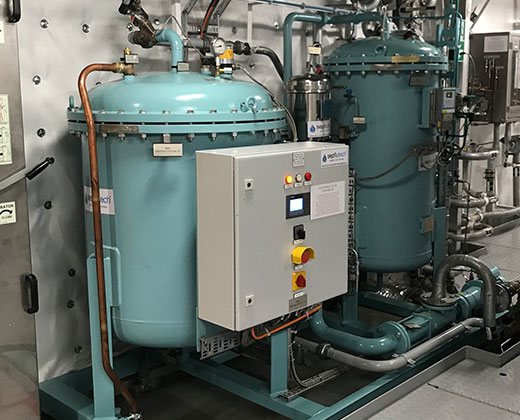
| Example system | SDU-5 |
|---|---|
| Installation | Cruise ship |
| Quantity | 11 |
| Application | Oil removal |
| Output / volume flow | 5 m³/h |
| Medium | Bilgewater |
| Installation date | 2016 - 2022 |
Bilgewater deoiling for expedition ships
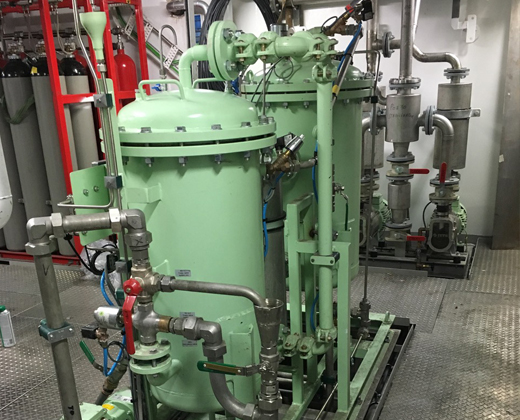
| Example system | SDU-2.5 |
|---|---|
| Installation | Expedition ship |
| Quantity | 3 |
| Application | Oil removal |
| Output / volume flow | 2.5 m³/h |
| Medium | Bilgewater |
| Installation date | 2018 - 2020 |
Bilgewater deoiling for naval and government vessels
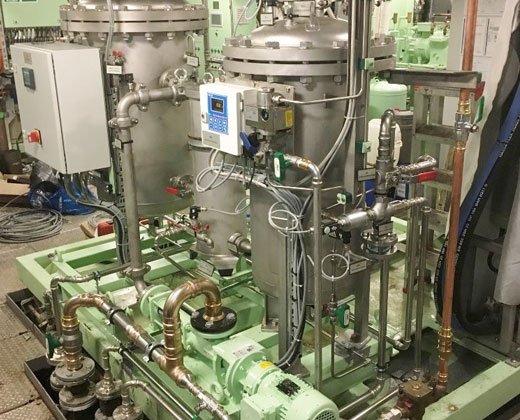
| Example system | SDU-2.5 |
|---|---|
| Installation | Research vessel |
| Quantity | 1 |
| Application | Oil removal |
| Output / volume flow | 2.5 m³/h |
| Medium | Bilgewater |
| Installation date | 2018 |
Bilgewater deoiling for merchant shipping
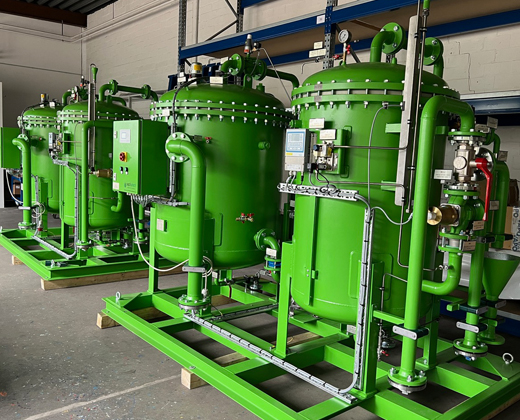
| Example system | SDU-10 |
|---|---|
| Installation | Container ship |
| Quantity | 12 |
| Application | Oil removal |
| Output / volume flow | 10 m³/h |
| Medium | Bilgewater |
| Installation date | 2022 - 2024 |
Deoiling for shore stations (MARPOL tank farm)
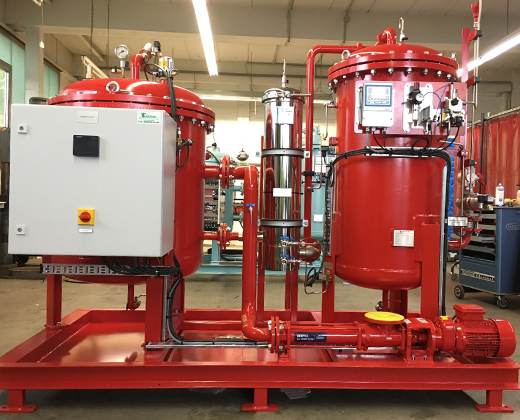
| Example system | SDU-5 |
|---|---|
| Installation | Waste disposal company |
| Quantity | 1 |
| Application | Oil removal |
| Output / volume flow | 5 m³/h |
| Medium | Ship and industrial waste water |
| Installation date | 2018 |
De-oiling for oil spill response at sea

| Example system | SPO-S320 |
|---|---|
| Installation | Multipurpose vessel |
| Quantity | 3 |
| Application | Oil removal |
| Output / volume flow | 320 m³/h |
| Medium | Sea surface / oil spill |
| Installation date | 2021 - 2023 |
Bilgewater monitor system
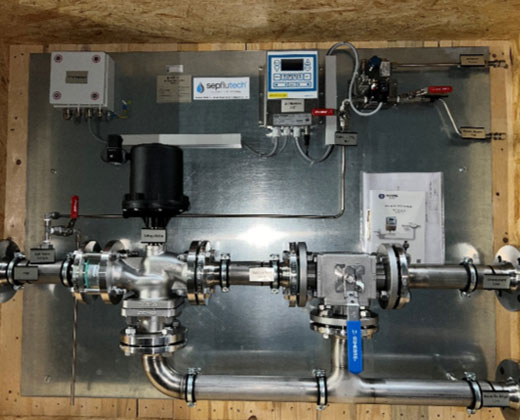
| Example system | OCMU |
|---|---|
| Installation | Shipping |
| Quantity | 12 |
| Application | Oily water measurement according to IMO regulations |
| Output / volume flow | 10 m³/h |
| Medium | Controlled measurement and discharge of oily ship wastewater (e.g. condensate water from the air cooling system) |
| Installation date | 2022 - 2024 |
